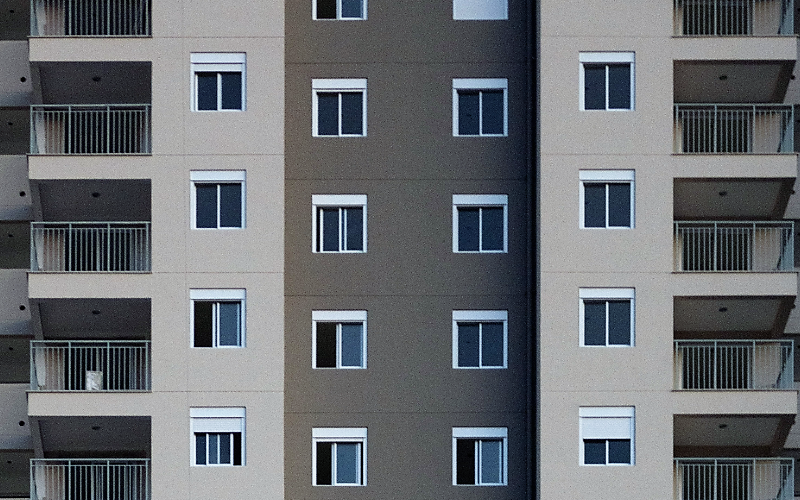Building Safety Regulator - Q&A Briefing - UPDATED JANUARY 2024
What is happening with the Building Safety Bill?

Building Safety Regulator: HRB requirements and resources
Q. What does the Building Safety Regulator (BSR) plan for 2024?
A. From 2024, the BSR will be fully operational and it has published a short Blog on how it will operate, particularly in relation to the registration of existing high-rise residential buildings (HRBs) and their new responsibilities for Building Control.
NHMF has published an update on duties under the Building Safety Act.
Q. What should landlords (AP/PAPs) do after registering HRBs?
A. Having registered HRBs with the BSR, ‘Accountable Persons’ (APs) and the ‘Principal Accountable Person’ (PAP) need to assess and manage the safety risks in their HRB. This includes preparing the safety case report required for the Building Assessment Certificate (BAC) and develop their resident engagement strategy. They should also begin developing their safety case report to help them manage the risks in each HRB.
If you need to amend a registration or key buildings information on your application, you can now do this directly in the registration portal but have a limited time to do this.
Q. How can I change my application on the Registration Portal?
A. If your application has been submitted and you need to amend the registration or key buildings information you have provided, you have 14 days to inform BSR of changes to your registration information and 28 days for any changes to your key building information. You can do this through the registration portal. Guidance on this has been added to information on ‘Applying to register HRBs.’
Q. Where can I find out more information and get help?
A. The BSR has published information and guidance on Building safety reforms and Building Control: An overview of the new regime. It has also published information on the roles of APs and the PAP and their legal duties and will be producing case studies. The BSR has published links to recordings of its training webinars, such as:
There are more resources on its website, including webinars. These BSR webinars and training sessions will help Landlords, APs and PAPs understand their legal responsibilities and what the BSR expects. They should consider registering for future sessions, as well as listening to recordings of previous ones.
There is also a free Building Safety Regulator ebulletin for anyone who wants to keep up-to-date and to be alerted on the building safety reforms. APs and PAPs should sign up to the BSR eBulletin. This eBulletin also gives details of the free webinars the BSR is organising to help duty-holders understand their legal responsibilities and what is expected of them. They are often popular and landlords should consider attending relevant webinars as soon as they can (need to book early because they are often fully-booked) This will help them prepare and assess what external expertise they might require. At one webinar, the BSR explained it does not expect consultants to be used in all cases.
The NHMF Best Practice website has Q&A briefing on the Building Safety Act.
The NHMF will be running further webinars on Building Safety in 2024.
In addition, the Chartered Association of Building Engineers (CABE) and Building a Safer Future (BSF) have entered a new strategic partnership support organisations assess their competency in relation to building safety, especially in regard to HRBs.
End of January briefing update
__________________________________
Building Safety News: New guidance on electrical safety in HRBs
Q. What is the latest on Building Safety?
A. The November BSR e-bulletin reported that the Electrical Safety Roundtable (ESR) had published guidance on ‘How to manage electrical systems within higher-risk buildings (HRB)’. An Executive Summary and detailed guidance are available to download.
The new guidance is designed to support the industry review its current practices around managing and maintaining electrical systems in HRBs and consider how it can improve the safety of residents. This sector guidance is a response to Dame Judith Hackitt’s appeal for industry to act now, rather than wait for Regulations to improve safety within Higher-risk Buildings (HRBs).
Peter Baker, Chief Inspector of Buildings said:
“Making high-rise buildings safer for residents is about understanding what can go wrong, how it can lead to a fire or structural problem, and what needs to be in place to prevent a serious incident and reduce its impact on people. Measures include having electrical and other building systems properly designed, installed, and maintained by competent people, and making sure safety systems work when you need them.
“The ESR guide is a welcome example of how industry has taken the initiative and is sharing the knowledge, experience and expertise of a number of organisations to help those responsible for the safety of high-rise buildings manage electrical safety risks, and prepare for when the building safety reforms become law”.
The ESR is a leading industry forum, providing research and policy solutions to government and industry.
Q. What are the key recommendations in this new guidance?
A. The Executive Summary sets out key recommendations, some are summarised below.
The Accountable Person (Dutyholder) should clearly delegate responsibility for managing electrical safety within each HRB. This will involve clear instructions and specifications, including frequency of inspection and testing/continuous monitoring of all the electrical systems. A robust risk assessment should be in place that is reviewed and updated prior to any electrical work being undertaken in an HRB.
Technically competent persons should be used to monitor the specification of electrical work and to ensure it is completed in compliance with the latest electrical safety standards and processes.
A site-specific induction should be required for all electrical contractors and all tradespeople before they are permitted access to the HRB. This induction should specifically identify any potential hazards and make the contractors aware of firestopping.
All wiring systems within communal areas of HRBs must be adequately supported throughout the length of cable run to protect against premature collapse in the event of a fire.
A dedicated Fire Risk Assessor should visit an HRB at regular intervals and should be given the work schedules carried out since the last survey.
An Emergency Planning document must be in place that includes a plan of the electrical supply configuration.
It is important that the Accountable Person and Building Safety Manager studies the full guide: ‘How to manage electrical systems within higher-risk buildings’ and does not rely on the Executive Summary.
Q. What should landlords do in response to this new guidance?
A. Landlords need to study the new ESR guidance and ensure that the Accountable Person and also the Building Safety Manager not only understand it but also review their building safety cases for each HRB in light of the new guidance. Standards and procedures should also be reviewed and updated as necessary to take account of this latest guidance on electrical safety in HRBs.
Q. What else did the BSR e-bulletin feature?
A. HSE also published a report from the Joint Regulators’ Group: RR1170 - High Rise Residential Buildings: Preliminary Serious Incident Scenarios and Potential Control Measures. The research team used formal risk analysis techniques (‘HAZID’ and ‘bow tie’) and a Hierarchy of Controls approach to rank the effectiveness of potential control measures to consider rapidly escalating events requiring immediate large scale emergency response. The report identifies ten preliminary representative serious incident scenarios. The potential control measures identified for consideration include: establishing a safety regime based on assessment of serious incident scenarios; development of an initial safety narrative for each building; near-miss incident recording; guidance for duty holders; and strong and committed leadership from dutyholders, the wider sector, and the future regulator. These findings are being used to inform the development of a risk framework for the proposed new safety case regime. It will be helpful for Building Safety Managers to be aware of these findings and the developing new regime for safety cases.
Following the Grenfell Tower disaster, the subsequent Independent Review of Building Regulations and Fire Safety and the conclusion that the UK building safety system was inadequate, the Government accepted the review’s recommendation for a new regulatory framework. The Joint Regulators’ Group, including the Health and Safety Executive, is assisting in the transition to this proposed framework.
Q. What should landlords be doing now?
A. Landlords should ensure that:
- they get regular e-bulletin updates from the BSR (see below)
- the Accountable Person and Building Safety Manager understand the latest guidance from the BSR and update their procedures, risk assessments and building safety cases.
Q. What should landlords be doing with residents?
A. Landlords should have a procedure in place so that each occupant receives a clear explanation of the process for landlords to agree to any DIY electrical work.
They should also have a process to manage requests for increasing electrical load demand.
Q. Where can landlords find out more?
A. Visit GOV.UK for information supporting the Building Safety Bill:
- Read about the Building Safety Bill
- Building safety programme
- Building Safety Bill Important documents
- Draft regulations
- Transition plan
Additional information can be found in the updated NHMF fire safety guidance, T&H briefing, Federation Building Safety webinar, NHMF Case Studies.
Q. How can landlords keep up to date?
A. By subscribing to the free BSR eBulletin to get the latest news and alerts on the building safety reforms.
Q. What is happening with the Building Safety Bill?
A. A new draft Building Safety Bill was published on 5 July 2021 to overhaul the current regulations, and to set out a clear pathway on how residential buildings should be constructed, maintained and made safe. It also sets out the framework to improve compliance, with tougher penalties for those who break the rules and mandates developers to belong to a New Homes Ombudsman scheme.
The Building Safety Bill is making its way through Parliament. At the heart of the building safety reforms is the creation of the Building Safety Regulator (BSR) in England. As the Bill passes through Parliament, a clearer idea of how the building safety reforms could operate will emerge. The BSR will share information as it learns more.
Government has also published an explanation of the main measures to improve fire safety following the Grenfell Tower fire in 2017.
Q. Who has been appointed to be the Building Safety Regulator (BSR)?
A. The HSE has been appointed as the BSR and is preparing to carry out its functions once the reforms become law.
Q. What is the Building Safety Regulator’s role?
A. BSR will have 3 main functions:
- overseeing the safety and performance of buildings
- helping and encouraging the built environment industry and building control professionals to improve their competence
- leading implementation of the new regulatory framework for high-rise buildings
HSE is preparing to carry out these functions once the reforms become law.
For all occupied higher-risk residential buildings (including existing ones), the Accountable Person (Dutyholders) will need to conduct and maintain a safety case risk assessment for each building and appoint a suitable Building Safety Manager (either as an individual, or as a body corporate) to be responsible for the day-to-day management of these properties. The term Building Safety Manager will be used throughout this Q&A to describe that role.
Q. Which buildings will the Building Safety Regulator be responsible for?
A. The BSR will regulate high-rise buildings, defined as buildings with 7 or more storeys or that are 18 metres or higher, and have at least 2 residential units. It will also regulate the design and construction of hospitals or care homes.
Q. How will the Building Safety Regulator operate and enforce Building Safety?
A. The BSR will:
- exercise its powers in line with regulatory best practice
- take a consistent and proportionate approach
- target enforcement activity at cases where action is needed
- work closely with existing regulators such as local authorities and fire and rescue authorities.
Q. How is HSE preparing for the new Building Safety regime?
A. To prepare for the new Building Safety regime, HSE is:
- creating the new BSR
- working with the Department for Levelling up, Homes and Communities (DLUHC) to implement the legislation
- consulting with industry bodies and other regulators
- building the processes that BSR will operate.
HSE is now a statutory consultee for planning applications for some types of building development.
It has set up new Governance Committees, it will work with other regulators through the Joint Regulators’ Group and will work with residents.
Q. What are the new roles and responsibilities under the Building Safety Bill?
A. The building safety reforms give dutyholders clear accountability and statutory responsibilities, which apply while buildings are being designed, built, refurbished and occupied.
The new roles are:
- Principal accountable person or accountable person, who will be the dutyholders for residential high-rise buildings once they are completed. The bill introduces an ongoing duty for each high-rise building. Dutyholders will need to:
- assess the building safety risk relating to the parts of the building for which they are responsible
- take all reasonable steps to reduce the likelihood of fire spread or structural failure
- limit the effect of any fire spread or structural failure on people in or around the building
- appoint a building safety manager
- Building safety manager will need to carry out the day-to-day functions to make sure the building is managed safely. They will be expected to encourage openness and trust, and work with residents to keep the building safe.
HSE has published a factsheet about dutyholders.
Q. How do these new roles relate to existing roles?
A. Existing roles will have new responsibilities during design and construction.
Existing dutyholders (clients, designers, principal designers, contractors and principal contractors) under the Construction (Design and Management) Regulations 2015 will have new duties. The NHMF Best Practice website explains duties under the CDM Regulations.
Their new duties will be to:
- plan
- manage
- monitor
- their activities in relation to building regulations.
The dutyholders will keep their existing duties, including:
- co-operating with other dutyholders
- communicating and sharing information
- co-ordinating and putting systems in place to plan and manage work
- ensuring competence: appointing people with the right skills, knowledge, experience and behaviours for the work they need to do.
Q. How will the Building Safety Regulator’s proposed powers be applied to existing residential buildings?
A. In advance of the final legislation, the Bill sets out that new all higher-risk (residential) buildings will be required to be registered before occupation. It is expected that existing residential buildings will need to be registered but the exact mechanisms have yet to be determined. The BSR will ensure that all higher-risk buildings, including existing ones, are managed and maintained to keep residents safe. It will have the power to inspect buildings and to require remedial work. The Accountable Person will be legally responsible for the safety of higher-risk buildings.
It is expected there will be a transition period before these new requirements apply to existing buildings but no timetable has yet been set out.
Q. What should landlords be doing now?
A. Landlords will need to understand their duties under the new Building Safety regime, appoint Dutyholders and develop a Resident Engagement Strategy. They should identify who the Accountable Person is and ensure that they understand what their new legal responsibilities are likely to be under the Building Safety Bill (these will be confirmed when the Bill becomes an Act).
The Accountable Person should consider appointing a suitable Building safety manager (either as an individual, or as a body corporate) to be responsible for the day-to-day management of each higher-risk building.
Landlords should start developing a Building Safety case for each higher-risk building. This will involve identifying all risk factors, considering how these might be mitigated and what layers of protection can be applied to each building. The focus will be on ensuring resident safety in each higher-risk building rather than just monitoring compliance against the legal requirements, such as gas safety, for all their stock. This will involve adopting a ‘holistic’ view that integrates their current compliance activities for each higher-risk building so they can report on how many are safe and which ones are unsafe.
Q. What factors should landlords consider for each Building Safety case?
A. Landlords should identify life critical safety factors, such as fire, gas, electrical, structural, asbestos, lifts and water hygiene for each higher-risk building.
They should collect information for each safety factor, which should include details of the original construction of the building and of what work has been carried out, to help identify risks to resident safety. There is an expectation that this information will be held digitally for all new buildings but over time for all buildings. The Hackitt Review recommended landlords should have a ‘golden thread’ of information for each building they owned, including those acquired by transfers or stock swaps.
Up to date evidence will needed to demonstrate resident safety for each higher-risk building (i.e., Building Safety case) which will explain how each risk is being mitigated and managed. Building Safety Managers will have an important role in ensuring evidence and assessments are kept up to date.
Q. What should building owners do about external wall systems?
A. Building owners should have an up-to-date fire risk assessment and understand the construction of external walls and their potential performance in the event of fire. The fire risk assessment should take into account height, materials, vulnerability of residents, location of escape routes, and the complexity of the building. NHMF has published separate Q&A briefing on fire safety.
External walls of residential buildings should not assist the spread of fire, irrespective of height. Existing residential buildings with external walls containing combustible materials may not meet an appropriate standard of safety and could pose a significant risk to the health and safety of residents, other building users, people in the proximity of the building or firefighters. They should take action to address the risk of fire spread from unsafe external wall systems, as soon as possible to ensure the safety of residents and not wait for further advice or information to act.
For residential buildings of 18m and buildings at any height with residents who need significant assistance to evacuate, they should check their external wall systems in line with the advice in the Government’s consolidated Advice Note.
Q. What should building owners do about removing unsafe external wall systems?
A. The Government published guidance ‘Coronavirus (COVID-19): pledge to ensure necessary building safety improvements can continue’ on 16 April 2020 explaining that building owners should make buildings safe as a priority, including remediating high-rise buildings with unsafe cladding. The Government has explained that building safety work should continue during the Covid-19 restrictions where it is safe to do so, in accordance with public health guidance and procedures put in place by the construction industry to protect the workforce and minimise the risk of spreading infection.
Q. What should landlords be doing with residents?
A. The Bill will give residents in high-risk residential buildings more routes to raise concerns about safety, and mechanisms to ensure their concerns will be heard and taken seriously. They will have more say in the management of their building and will be able to raise building safety concerns directly to the owners and managers of the buildings, who will have a duty to listen to them. HSE has set up a Residents’ Panel to make sure residents have a voice in the work of the BSR and can give their views about:
- resident engagement
- how residents escalate safety concerns to the regulator
- the regulator's strategic plan
- other matters that affect them.
Residents also have a duty not do anything to affect the structural safety or damage any of the fire safety measures (these include smoke detectors, fire alarms, fire doors and fire extinguishers) of their building.
To prepare for these new requirements, landlords should develop plans to ensure they can engage effectively with residents in high-risk residential buildings, either through existing structures or by establishing new ones.
Q. What good practice examples for Building Safety are there?
A. MHCLG set up its ‘Early adopters’ scheme to trial ‘aspects’ of the new regulatory framework before legislation is passed. The group launched a building safety charter earlier in 2019. One housing association taking part, Clarion, is taking a proactive approach to developing Building Safety cases for each higher-risk building that was presented at a National Housing Federation webinar.
For each higher-risk building, they are:
- appointing Building safety manager (either as an individual, or as a body corporate) s
- assessing the risk factors and how these could be mitigated and managed
- collecting evidence to demonstrate whether these buildings are safe
- building the ‘golden thread’ of building information.
For each higher-risk building, they will be developing:
- localised resident engagement strategies
- Building Safety cases
- Comprehensive Building Safety regime.
Q. Where can landlords find out more?
A. Visit GOV.UK for information supporting the Building Safety Bill:
- Read about the Building Safety Bill
- Building safety programme
- Building Safety Bill Important documents
- Draft regulations
- Transition plan
Additional information can be found in the updated NHMF fire safety guidance, T&H briefing, Federation Building Safety webinar, NHMF Case Studies.
Q. How can landlords keep up to date?
A. By subscribing to the free BSR eBulletin to get the latest news and alerts on the building safety reforms.
Q. What other resources are available to landlords?
A. The NHMF will be holding a training webinar on Building Safety that will explain the current proposals in the Building Safety Bill and will include examples of how two social landlords are preparing for the new Building Safety regime.


